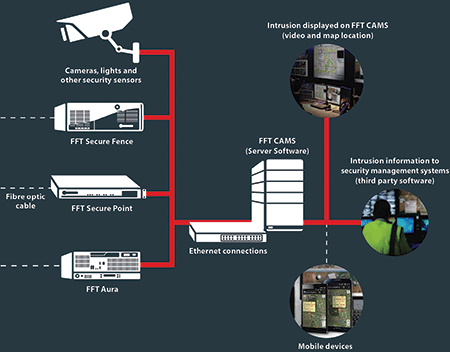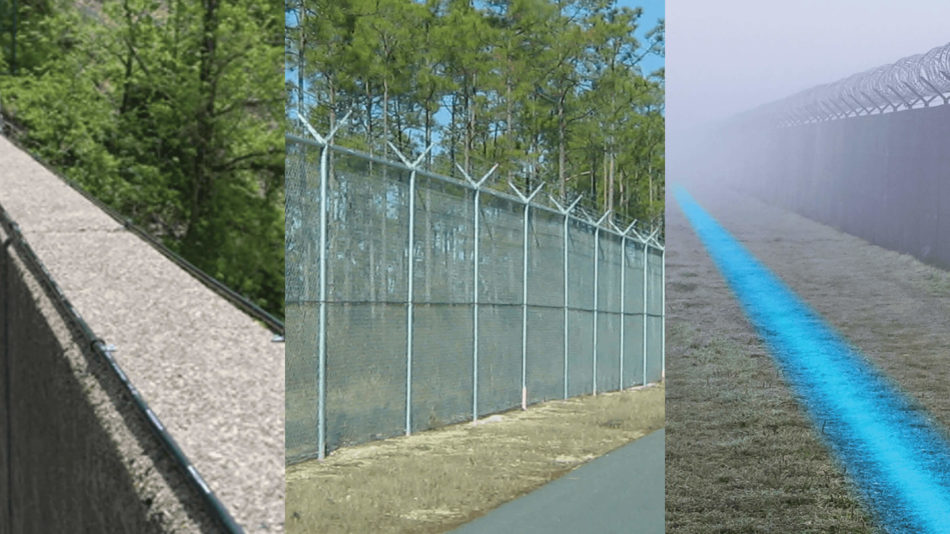Improve Your Safety With Advanced Fiber Optic Safety And Security Equipments
In an age where protection is vital, sophisticated fiber optic protection systems present a compelling service for boosting security throughout numerous environments. These systems not only flaunt exceptional transmission capacity and speed for high-resolution monitoring yet additionally offer amazing resilience versus exterior interferences. As organizations significantly seek trusted ways to shield their properties, the integration of ingenious modern technologies like AI and IoT within fiber optic frameworks increases crucial concerns concerning their effectiveness compared to conventional systems. What implications do these developments hold for future safety procedures?
Benefits of Fiber Optic Safety And Security
Using the benefits of fiber optic modern technology significantly enhances security systems throughout numerous applications. Among the key benefits is the raised bandwidth capability, permitting the transmission of big quantities of data at high speeds. This is specifically important for real-time video monitoring, where high-resolution feeds can be sent out without latency, making sure immediate reaction capabilities.
In addition, optical fiber exhibit superior resistance to electromagnetic disturbance, which is crucial in settings with potential signal interruptions. This dependability guarantees consistent performance in essential safety and security procedures. Additionally, fiber optic cables are much less prone to tapping and unauthorized accessibility contrasted to traditional copper circuitry, therefore improving data stability and confidentiality.
An additional noteworthy benefit is the longevity of fiber optic systems; they are a lot more immune to ecological elements such as dampness, temperature level changes, and harsh materials. This resilience translates to lower maintenance expenses and longer life expectancies for security setups.
Lastly, the light-weight nature of fiber optic cables helps with simpler setup and transmitting, specifically in complicated frameworks (fiber optic security system). Eventually, the combination of fiber optic technology right into protection systems not only reinforces defense procedures but additionally maximizes functional performance
Key Features to Think About
When examining fiber optic safety and security systems, a number of crucial attributes should be thought about to make certain optimal performance and efficiency. Analyze the system's discovery variety and sensitivity; an extensive variety permits for monitoring huge locations, while high sensitivity ensures that even small disruptions are found promptly.
Following, think about the assimilation abilities of the system. A fiber optic protection system ought to effortlessly user interface with existing protection actions such as video cameras and alarm systems, creating a cohesive protection network.
Toughness and ecological resistance are additionally critical features. Guarantee that the system is created to stand up to harsh weather and possible physical risks, as this will certainly lengthen its operational life expectancy.

Lastly, look into the scalability of the system. A durable fiber optic safety system ought to be conveniently expanding to accommodate future demands without considerable overhauls. By meticulously considering these functions, you can select a fiber optic protection remedy that improves safety and protection in your environment.
Installation Process Review
To successfully implement a fiber optic safety system, an organized setup procedure is vital. This procedure begins with a thorough website assessment to figure out the specific safety demands and to identify ideal areas for fiber optic cords and safety gadgets. Following this analysis, the installation team you can try these out will certainly create a comprehensive plan, consisting of cord paths, required devices, and conformity with neighborhood regulations.
Next, the setup involves laying the fiber optic wires, ensuring they are safeguarded from environmental elements and physical damage. Appropriate handling strategies are critical, as fiber optic cable televisions are delicate and can be conveniently damaged. After the cabling is mounted, ports and terminations are meticulously finished to ensure signal integrity.
The subsequent stage contains setting up security devices such as cameras, movement detectors, and alarm systems, all integrated with the fiber optic network. Rigorous screening is performed to validate that all components are working appropriately and to make certain optimum efficiency.

Comparing Fiber Optic to Conventional Equipments
The advancement of protection innovation has brought about significant innovations in the comparison in between fiber optic systems and traditional copper-based systems. Fiber optic systems make use of light to send information, offering exceptional transmission capacity and rate contrasted to their copper equivalents. This leads to improved data transmission abilities, making optical fiber perfect for high-resolution video clip monitoring and real-time tracking.
Additionally, fiber optic wires are immune to electromagnetic interference, minimizing the possibility of signal destruction brought on by outside variables. This characteristic makes certain consistent performance, even in tough settings. On the other hand, standard copper systems are more susceptible to disturbance, leading to prospective vulnerabilities in security applications.
Sturdiness is another advantage of fiber optic systems. They are less susceptible to harm from ecological factors such as wetness and temperature level fluctuations, which can endanger copper electrical wiring. In addition, fiber optics are lighter and thinner, enabling less complicated installment and decreased physical footprint.
Nevertheless, conventional systems have a tendency to have lower first expenses, making them attractive for budget-conscious projects. While fiber optic systems may need a higher in advance investment, their long-lasting advantages-- such as lower upkeep costs and greater dependability-- typically outweigh the initial cost, placing them as an exceptional selection for modern-day security needs.
Future Trends in Safety And Security Innovation
Arising fads in security technology are poised to transform the landscape of surveillance and risk detection - fiber optic security system. As companies increasingly face sophisticated dangers, developments such as expert system (AI) and device discovering (ML) are ending up being indispensable to security systems. These technologies enhance the ability of fiber optic systems by allowing real-time data analysis, recognizing abnormalities, and automating responses visit here to prospective breaches
In addition, the integration of the Internet of Points (IoT) is reinventing you could look here safety and security frameworks. IoT gadgets can provide comprehensive situational awareness and help with seamless interaction between different safety and security parts. This interconnectedness enables a lot more effective surveillance and faster event response times.
Biometric verification is also acquiring energy, supplying a higher degree of security with distinct physical characteristics. As this modern technology progresses, it is likely to be included into fiber optic systems for enhanced access control.
Conclusion
To conclude, advanced fiber optic protection systems represent a significant improvement in security and security innovation. Their remarkable bandwidth, resistance to disturbance, and resilience promote reliable tracking and data stability. As these systems incorporate AI and IoT capabilities, they improve the total safety and security framework, guaranteeing durable security for assets. The transition from traditional systems to fiber optic options mirrors a growing fad in the direction of more effective and efficient safety measures in a progressively complicated technological landscape.